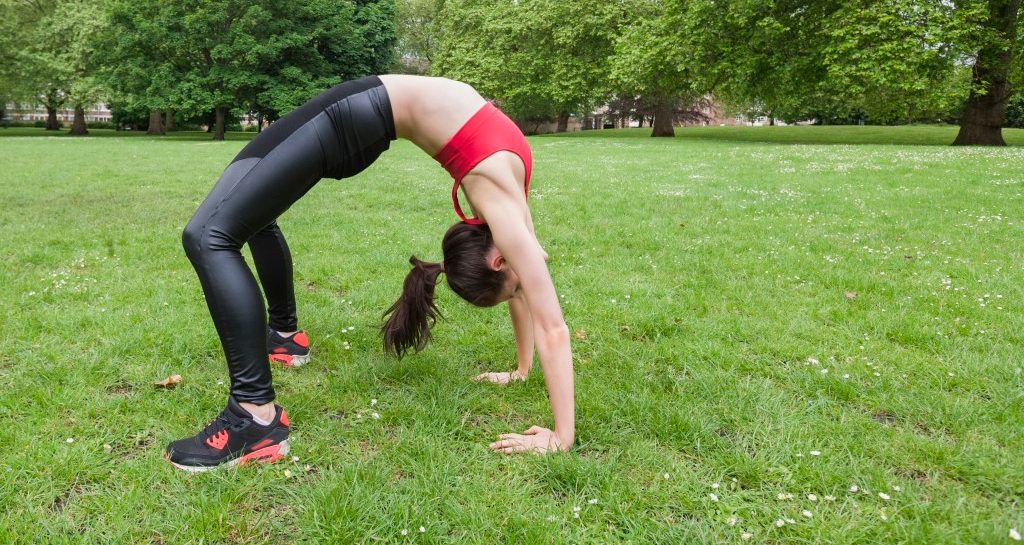Can Compression Clothing Improve Athletic Performance?

Compression garments won’t make you run faster or jump higher, but can have benefits in other sports, such as helping you recover from resistance exercise.
Compression garments are widely used in winter racing sports, as they can cut air drag and help skiers control muscle vibrations, research suggests. They may also help people recover from resistance exercise, especially setting up cyclists for better performance the next day.
But will they help you run faster or jump higher? During the 2012 World Indoor Athletics Championships, Olympic gold medalist runner Sanya Richards-Ross wore compression sleeves on her arms in hopes of improving her performance.
And it’s not only world class athletes who squeeze into compression garments.
YOU MIGHT ALSO LIKE: Morning Exercise Boosts Weight Loss
Some fitness enthusiasts don compression arm and calf sleeves, tight leggings, and girdle-like shorts that fit from the waist to the knees. Supposedly, these extras, which cost from around $40 to hundreds of dollars, boost blood flow and oxygen to muscles so you can run faster and work out longer.
At least, that’s what many manufacturers of compression garments say. But researchers have not found much evidence to back up those claims.
To study the effect compression garments have on running, Abigail Stickford, PhD, now an exercise researcher at Appalachian State University in North Carolina, recruited 16 highly trained distance runners to run for 12 minutes at different speeds while wearing compression calf sleeves (which look like super tight knee socks with the feet cut off). The same runners then ran again without the compression garments.
During both runs, monitors measured the runners’ gait and how much oxygen they used to see if the compression garments improved the mechanics of running and lowered oxygen consumption (a marker of more efficient athletic performance).
The results showed wearing the compression garments had virtually no effect on the runners. There was zero improvement in stride length or stride frequency. What’s more, four research subjects used more oxygen while wearing the calf sleeves, which showed they were running less efficiently. Four other runners slightly decreased their oxygen usage. This was likely a placebo effect, however, as those research participants were convinced in advance the compression wear would improve their racing.
"Overall, with these compressive sleeves and the level of compression that they exert, they don't seem to really do much," Stickford said, adding that some people may benefit from a “positive feeling about it.”
Running is an aerobic exercise centered around endurance, but exercises comprised of brief, strength-centered actions, like jumping and bodybuilding, are anaerobic.
To see if compression garments improved anaerobic exercise performance, Indiana University researchers had 25 volunteer high jumpers wear three different versions of shorts that compressed their thighs — one pair made to fit the individual, one that was a size smaller, and a size larger.
Researchers measured a series of vertical jumps to see if performance changed when the participants wore any version of the compression garments. "We looked at various different angles to see if the variability changed and nothing significant happened," Nathan Eckert, a kinesiologist, explained. "This basically states that all three different levels of compression did absolutely nothing for them."
He added that consumers should be wary of manufacturers’ claims that compression garments will improve their exercise abilities. "Consumers need to keep in mind that this is a business, and that they (the manufacturers) are trying to sell you their product," Eckert said.
The evidence is stronger for the claim that compression garments help athletes recover. A 2017 meta-analysis of 23 studies on healthy participants concluded that wearing the garments did cut soreness from two to eight hours after a resistance workout and a day later, especially for cyclists.
Although compression garments may not be a way to zap athletic performance into hyperdrive, that doesn’t mean they don’t have benefits for some health conditions. Doctors have long recommended compression stockings to ease pain and swelling from varicose veins, for example.
Compression stockings can be lifesavers for people after surgery and for patients who are not mobile due to an illness. These situations increase the risk for blood clots that can move from the legs to the lungs, causing a pulmonary embolism. Wearing compression stockings can prevent this potentially life-threatening problem.
Updated:
August 25, 2022
Reviewed By:
Janet O’Dell, RN